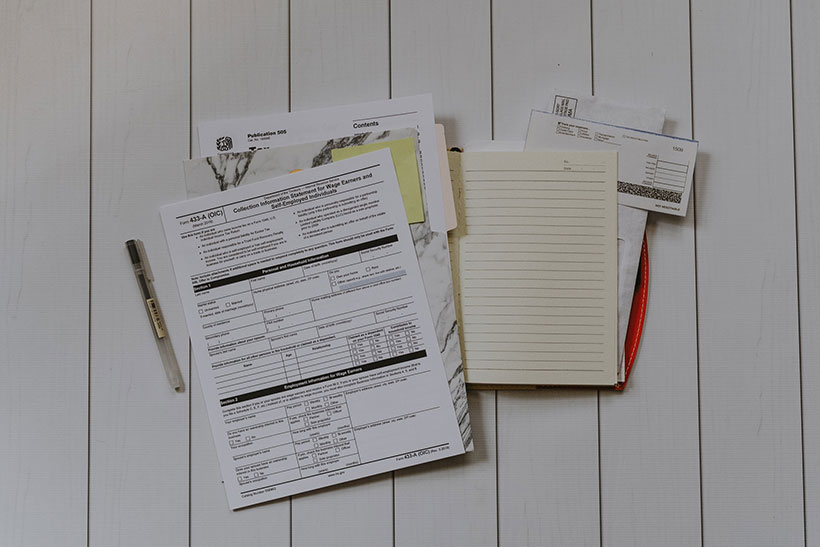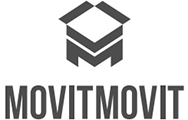2020 Important Moving Paperwork
The organization is a key to successful moving. You will have to coordinate many things, schedule numerous dates and contact important facilities. Consider the process of packing your personal belongings, you don't want to forget anything and you will need some sort of a guide to help you, some simple paper like moving checklist or moving inventory. During the moving process, you will encounter numerous important papers and documents. When you are packing for the trip t another country you will always check some things twice, your passport. Moving paperwork and your personal documents will be one of the most important things to organize during the moving process.
If you decide to hire a professional moving company, you will be presented with numerous documents that you will need to understand and keep track of. Our advice is to start with buying a binder and creating a moving folder on your computer, this will help you sort your documents and you will always know where they are. We will start a guide by explaining new paperwork that you will receive from your movers, it is very important to understand all the forms before you sign anything! All of the paperwork received from the moving company should be kept in a separate folder, and you need to keep and save that folder until few weeks after the move, keep the receipts too, don't throw away anything until you are sure that the moving process is completely finished. Moving companies will usually expect you to have the moving inventory before they start the process, so that is the one document you will need to prepare on your own before contacting your movers.
Here is the list of 8 documents, receipts, and forms that your movers will give you and that you need to keep and understand.

1. Moving Estimate
There are three types of moving estimates, you will receive the estimate after the moving company has learned about your belongings and moving distance. Moving estimate must include packing service charges, transportation charges, storage, insurance, labor charges, and any additional service charges. The moving estimate can be changed during the process and that depends on the type of the estimate you opt for, these are the three types of moving estimates:
- • Non-binding estimate
- Your movers can not be sure what is the actual size of the move before the moving process starts. A non-binding estimate is an estimate that is not fixed, this means that your movers can change the original price after establishing the actual size of the move.
- • Binding estimate
- A binding estimate is a fixed price based on an estimated amount of weight. It cannot be adjusted, even if the items end up weighing more or less than originally estimated.
- • Binding not-to-exceed estimate
- The most customer-friendly type of estimate. This estimate can be adjusted but only if the actual weight is less than estimated, in other words, you will either pay the original price or less.

2. Bill of Lading
The Bill of Lading is the most important document that you will receive. This document is a sort of a receipt that includes information about moving rates, payment methods, insurance, origin and destination, and most importantly it also contains the list of the moving items. The bill of lading is a legally binding contract between you and the moving company.
3. Order for Service
This is the document that needs to be signed both by you and your movers, it is almost always attached to the bill of lading and it includes moving estimate details, pick up and delivery dates and other additional services.
4. Moving Inventory Paperwork
You need to review your personal inventory carefully before the loading starts. Your truck driver will evaluate your inventory while loading your belongings and he will provide you with a descriptive inventory form. All your items will be listed and described, if you packed some o the items by yourself you will find a “PBO” mark on the side. PBO stands for “Packed by Owner” and it means that the condition of the items remains unknown. Review this list before signing this document.
5. “Your Rights and Responsibilities”
If your mover does not provide you with these documents, you may be dealing with rogue movers. This is the pamphlet where you will find instructions for how to handle complaints and questions regarding your move. This pamphlet that usually goes with the copy of the official Ready to Move Brochure, according to the FMCSA.
6. Liability Options
Levels of liability will be explained in the “Your Rights and Responsibilities” document your movers should provide you with additional explanations of liability options. When You Move document, your mover may still provide you with an additional explanation of liability options. Most commonly there are two types of liability options:
- • Released Value Protection:
- Released Value Protection is automatically included in the cost of your interstate move. The federal mandate for Released Value Protection in interstate moves is 60 cents per pound per item. Meaning that moving company is responsible for damaging any of your items. Damaged item is weighed and then multiplied by .60 cents.
- • Full Value Protection:
- Full Value Protection is valuation coverage offered by interstate movers. The moving company stands reasonable for damaging your items, and they have to pay you the actual cost of the items. They will pay the item's current market price.
7. Statement of Services
Statement of Service is a moving form related to long-distance moves and you will receive it after the delivery of your belongings. This statement includes the final cost for your shipment and reflects the tariff charges based on the actual weight and services.
8. IRS Tax Deduction Forms
If you are moving for work, you may be able to claim moving expense deductions using IRS Form 3903. According to the IRS, these moving expenses must be related to starting work in a new location.
Personal Documents:

You also have to keep track of your personal documents, take a look at the list of 8 most important personal documents that you will need to bring with you. Apart from those 8 most important documents that everyone should have there are several documents that you don't want to forget if you have them, living will, divorce papers, insurance documents, driver's license, dental records, adoption papers, pet vaccination records, tax records, etc.
- • Birth Certificate
- • Passport
- • Visa
- • Social Security Cards
- • Work Permit
- • Medical Records
- • School Records
- • Marriage Certificates
There is certain paperwork that you need to handle after the move. You should deal with the so-called “post-move paperwork” as soon as possible.

- • Register for voting in your new neighborhood.
- • Inform the postal service about the change of address.
- • Inform the utility service companies about the change of address.
- • Inform your insurance company about your relocation.
- • Transfer your license, update registration and check the insurance.
- • Inform federal revenue agency and state tax agency about the change of address.
- • Transfer all the vet files and find the local vet.
Why Movit Movit Local Moving Service
- Affordable Prices
- Qualified & Skilled Movers
- Responsive & Welcoming Staff
- Professional First Class Moving Service
- Exceptional Packing & Transport
- Reputable & Reliable Moving Company
- Full Service Moving Experience
- A Large Fleet of Trucks & Vans, Insured & Well Maintained
- Guaranteed 100% Satisfaction






